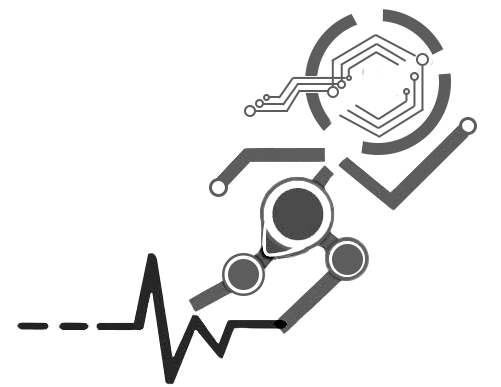
This course provides a broad overview of biomechanics, covering a wide selection of topics from human to cellular scales. Mechanical engineering principles will be applied to biomechanics problems, including rigid body motion analysis, kinematics and kinetics of movement, mechanics of biological tissues (particularly bone and cartilage), and cellular biomechanics. This includes learning the principles of biomechanical testing, application of biomedical sensors, and numerical methods used regularly in biomechanical research to understand the biomechanics of musculoskeletal and simulations of biomechanical structures.
Fundamentals of the formulation and application of the finite element method to problems of continuum mechanics, including problems in solid mechanics. Exposure to engineering mathematics (matrix operatoin, differenctial equations) at an undergraduate level is assumed. Knowledge of Matlab programming is an asset.
The course provides the basic concepts and fundamentals of optimization. It covers problems addressed by operations research, and problem formulations in linear programs. It includes the graphical solution of linear programs, simplex method, duality and sensitivity analysis, transportation model, assignment model, network planning, and advanced methods and algorithms for solving optimization problems.
Topics: Boundary-value problems. Methods of approximation. Time dependent problems. Isoparametric elements. Numerical integration. Computer implementation. Mesh generation and layouts. Two-dimensional finite elements.
A hands-on experience in working with PLC and design control systems. In this course, students apply the theoretical concepts of control systems and PLC programming into their project. The course outline was designed to give students a solid background in Linear systems and their characteristics, the Laplace transform, block diagram manipulation, frequency response, application to first and second order physical systems, analysis and design of
sensors and actuators, industrial automation systems, and programmable logic controllers (PLC).
Introduction to musculoskeletal biomechanics, including experimental and analytical approaches to the analysis of movement, experimental instrumentation and devices and joint dynamics. Review of linear algebra. Description of physical space, coordinate systems, optical measurement of marker position. Three-dimensional rigid body kinematics, extraction of the kinematical quantities from the experimental data. Three-dimensional rigid body dynamics, determination of segmental inertial properties, determination of the joint forces and moments, measurement of ground reaction forces, theorem of the impulse. Force sharing problem, method of the Lagrange multipliers, optimization. Elements of muscle and cartilage mechanics, introduction to the analysis of healthy and pathologic gait. Laboratory experiences complement and reinforce the theory.
Review of axial-force, shear-force, bending moment and torque diagrams. Review of vector and matrix algebra. Kinematics of deformation and strain. Concept of stress. Constitutive equations. The states of plane stress and plane strain. Solutions to elementary elasticity problems – axial force, torsion, bending, shear force. Deflection of beams. Euler buckling. Yield criteria.
This course presents the fundamental principles of Newtonian mechanics; distributed loading; free body diagrams; rigid body equilibrium; structural analysis; internal loading of structural members; friction; dynamics of particles; linear and angular momentum of rigid bodies; conservation of energy; principles of impulse and momentum, and plane motion of rigid bodies.
In Thermodynamics, you have learned that any form of energy can be transferred in the form of Work and Heat by interactions of a system with its surroundings. However, Thermodynamics provides no information regarding the nature of the interaction or the time rate at which the energy transfer occurs. Thermodynamics only deals with the end states of the process during which an interaction occurs. Heat and Mass Transfer is a basic engineering science that deals with rate of transfer of thermal energy. It has a broad application area ranging from biological systems to common household appliances, residential and commercial buildings, industrial processes, electronic devices, and food processing. The main goals of this introductory level course are (a) to cover the basic principles and concepts of heat and mass transfer, (b) to present real-world engineering applications to give students a feel for engineering practice, and (c) to develop an intuitive understanding of the subject matter by emphasizing the physics and physical arguments.
Modeling, performance analysis and control with potential application to engineering, physical and biological systems. Topics include modeling in time, Laplace and frequency domains. Performance and stability by methods of Hurwitz, Routh, Bode, and Nyquist. Control by ON/OFF and PID Controllers.
This course covers macroscopic thermodynamics and its applications to engineering practice. Topics include properties of pure substances and equilibrium, the First Law of thermodynamics (energy transfer and energy balance in closed and flow systems), the Second Law of thermodynamics and its applications (entropy analysis of closed and flow systems, quantification of irreversibilities and inefficiencies, quality of energy, etc.), thermodynamic cycles and exergy.
This course provides the concepts, procedures, and analysis techniques necessary to design various mechanical elements commonly found in machines. Failure analysis such as yield criteria and fatigue are covered. Component design includes screws, fasteners, shafts, bearings and lubrication, and gears. The emphasis is on the use of readily available materials, standard component, and appropriate design approaches to achieve safe and efficient system design.
This course presents the legal implications of occupational health and safety as expressed in the Environmental and Occupational Health and Safety Act, and exposes students to methodologies designed to ensure compliance with the Act. The course stresses safety initiatives and deals with specific safety issues such as noise levels, biosafety, hazardous waste management, safety in the workplace, radiation safety and industrial safety.
This course combines the knowledge gained in the advanced engineering and basic science courses with the design skills taught in ENGG*1100 and ENGG*2100 in solving open-ended problems. These problems are related to the student’s major. Additional design tools are presented, including model simulation, sensitivity analysis, linear programming, knowledge-based systems and computer programming. Complementing these tools are discussions on writing and public speaking techniques, codes, safety issues, environmental assessment and professional management. These topics are taught with the consideration of available resources and cost.
This course deals with engineering applications of matrix algebra, vector spaces and computer techniques to solve linear systems. Topics include linear transformations, eigenvalues and eigenvectors, diagonalization and their applications. Additional topics include complex variable algebra, multi-variable functions, partial derivatives, maxima and minima.


intelligent Human Assistive Devices Lab
2500 University Dr. NW, Calgary, AB, CANADA T2N 1N4
Room: CCIT 216
Amin.Komeili@ucalgary.ca
+1 403 22 04 515